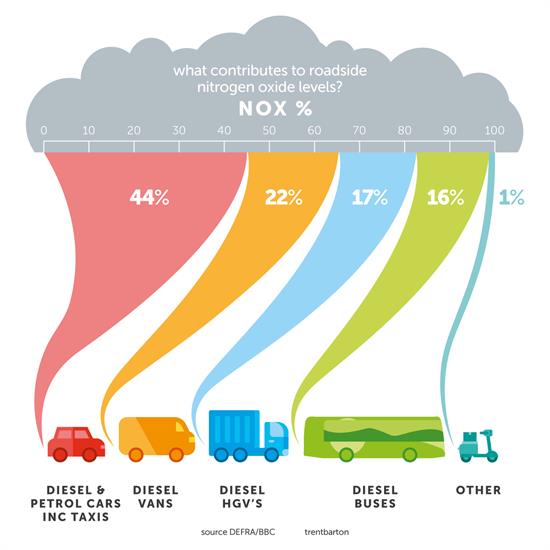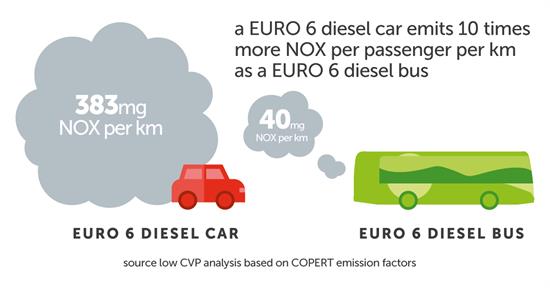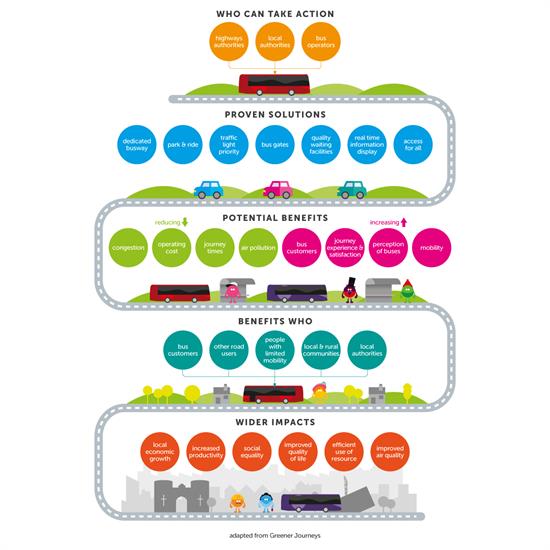On 2019’s Clean Air Day (20 June) we wanted to talk about the c-word that a lot of people seem to be ignoring, or, blissfully unaware of its impact.
It is the single biggest threat to bus services, no matter who is operating them.
That word is congestion. And if it is allowed to grow unchecked journey times will continue to worsen, people will be put off travelling by less frequent and slower buses and Derby’s and Nottingham’s air quality will decline further. The cities are already both in the top 10 for illegal levels of nitrogen dioxide.
How is congestion affecting us? Well let's roll back the clock by 10 years to a time when Gordon Brown was Prime Minister and Game of Thrones was just a book. A round trip on the allestree - Derby city centre to Allestree and back again - took 38 minutes. Fast forward 10 years, and that same journey now takes 50 minutes. And in a decade could take more than a hour. That's a 31% increase in journey time.
Similarly, in Nottingham in 2009, a round trip on the keyworth - Nottingham city centre to Keyworth and back again - took 50 minutes. It now takes more than a hour. If congestion continues to worsen, could take more than 70 minutes 10 years on.
This can't continue.
Jeff Counsell, our top boss, said: “The 31% increase in the allestree journey and the 22% increase in the keyworth journey between 2009 and 2019 are not just an inconvenience to customers. They show our buses are slowed by the huge volumes of sole occupancy private cars on the road which are contributing most to Derby’s and Nottingham’s poor air quality.
“And congestion means we have to put more buses and drivers onto the routes to maintain the frequency which customers value highly. That costs us and feeds into higher fares. It’s a vicious cycle.
“The Government’s own Department for Transport is forecasting 40% more road traffic by 2035. Add on the 30% forecast by Greener Journeys due to electric cars being so much cheaper to run and it’s a rapidly worsening future.”

And it's not just suburban services that taking the hit. Our non-stop Derby-Nottingham route, red arrow, is routinely hampered by congestion. Off-peak runs from Derby to Nottingham take just 35 minutes, but in peak they slow to 45 minutes.
Jeff said: “With red arrow, each coach takes 10 minutes longer to make the journey. The knock on effect of that is the frequency of the service reduces from once every 10 minutes to once every 12 minutes.
“When we are at our busiest, when most people want to travel between the cities for work or to attend college, we have to cut the frequency. Sustained frequency cuts risk overcrowding and a decline in how attractive choosing to travel by bus is.”
We have accelerated our investment in new, ultra clean buses – each of which is less polluting than a new diesel car. Over the past 4 years we have reinvested profits and spent £20 million on greener buses and we have plans to introduce zero emission electric buses in the near future.

![]() But, Jeff continues, we need help to break the cycle of worsening congestion: “If more people travel by bus there are less cars on the road, congestion will ease and we can improve punctuality, journey time and frequency. All of which makes the bus even more attractive and, most importantly for all people, improves air quality.
But, Jeff continues, we need help to break the cycle of worsening congestion: “If more people travel by bus there are less cars on the road, congestion will ease and we can improve punctuality, journey time and frequency. All of which makes the bus even more attractive and, most importantly for all people, improves air quality.
“Far too often every working day you can see one bus surrounded by dozens of cars in crawling traffic jams in Derby and Nottingham. It’s so frustrating to know that if half of those drivers were on the bus everything would move so much quicker and cleaner.”
We calling on the local authorities in Derby and Nottingham to invest in more traffic signal priority where the system senses an approaching bus is late and keeps its light green to let the bus through. And we need genuine bus lanes and bus gates which give the bus an advantage over the car.
“This quickens journey time and is a very visible advertisement to static car drivers that the bus might be a better travel option,” said Jeff.
“The really big way to improve air quality is to encourage drivers to leave their diesel cars at home. Those cars account for 44% of roadside nitrogen oxides emissions whilst buses create just 16% and falling as bus fleets are renewed.”
